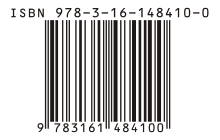- Machine-readable medium
-
In telecommunication, a machine-readable medium (automated data medium) is a medium capable of storing data in a machine-readable format that can be accessed by an automated sensing device and capable of being turned into (practically in every case) some form of binary.
Examples of machine-readable media include (a) magnetic disks, cards, tapes, and drums, (b) punched cards and paper tapes, (c) optical disks, (d) barcodes and (e) magnetic ink characters.
Common machine-readable data storage and data transmission technologies include processing waveforms, optical character recognition (OCR) and barcodes. Any information retrievable by any form of energy can be machine-readable. Examples include:
- Acoustics
- Chemical
- Electrical
- Semiconductor used in volatile RAM microchips
- Floating-gate transistor used in non-volatile memory cards
- Radio transmission
- Magnetic storage
- Mechanical
- Pins and holes
- Punched card
- Paper tape
- Music box cylinder or disk
- Grooves (See also Audio Data)
- Phonograph cylinder
- Gramophone record
- DictaBelt (groove on plastic belt)
- Capacitance Electronic Disc
- Pins and holes
- Optics
- Thermodynamic
See also
References
 This article incorporates public domain material from the General Services Administration document "Federal Standard 1037C".
This article incorporates public domain material from the General Services Administration document "Federal Standard 1037C".
This computer storage-related article is a stub. You can help Wikipedia by expanding it.

